
About Andrew Cusack
 Writer, web designer, etc.; born in New York; educated in Argentina, Scotland, and South Africa; now based in London.
Writer, web designer, etc.; born in New York; educated in Argentina, Scotland, and South Africa; now based in London. read more
News
Blogs
Reviews & Periodicals
Arts & Design
World
France
Mitteleuropa
Knickerbockers
Argentina
The Levant
Africa
Cape of Good Hope
Netherlands
Scandinavia
Québec
India
Muscovy
Germany
Academica
The Old New York Observer Building
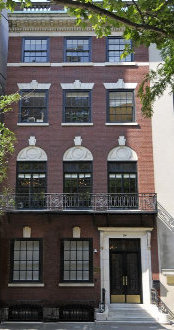
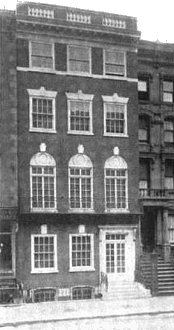
No. 54, East Sixty-fourth Street
“FOR 17 YEARS,” writes Peter W. Kaplan, “since The New York Observer entered city life in 1987, it has existed within a red brick and white-marble-stepped townhouse on East 64th Street.” Designed by Ernest Flagg and Walter B. Chambers during their brief partnership, No. 54 East Sixty-fourth Street (between Park & Madison) was built in 1907 as a private residence for Robert I. Jenks. The AIA guide accurately describes it as “four stories of delicate but unconvincing neo-Federal detail… a minor Flagg.” In 1947, the townhouse was converted into offices for the Near East Foundation, which was founded in 1915 to provide relief for Armenian refugees from the Ottoman Empire and later took on greater responsibilities in North Africa and the Levant. It was then bought by Arthur L. Carter, the founder and publisher of the New York Observer for use as the salmon-tinted newspaper’s headquarters.
In 2004, the Observer moved down to Broadway, two blocks south of the Flatiron Building (and just a few blocks up from The New Criterion whose founder, Hilton Kramer, was for nearly two decades the art critic for the Observer). The townhouse was sold by Carter to the Russian-born Janna Bullock, real estate developer & sometime Guggenheim foundation board member for $9.5 million in the year the newspaper moved out. In 2005, Bullock renovated the building and had it used at the Kips Bay Decorator Show House for the year before selling it on to the Irish investor Derek Quinlan for $18.74 million. Quinlan put it on the market for $36 million but last year the asking price was chopped to $27 million.
Twenty-five feet wide, five stories, and with over 10,000 square feet, No. 54 was probably the only newspaper headquarters to feature nine working fireplaces, rosewood panelling, and oak wainscoting. But the best feature, by a mile, is the splendid iron-railed staircase, which looks like it was lifted straight from Paris. Elegant and graceful, a rare century-old survival in Manhattan.
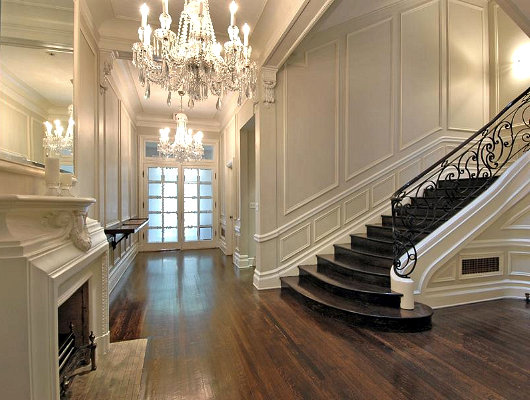
“We worked in a home,” continues Kaplan, an old-school newspaperman, the fourth (and longest-serving) editor of the paper:
Four floors, a giant alimentary center-hall staircase, caked moldings, brass chandeliers, glass-fronted oak cupboards, The New York Observer sometimes felt like a Henry James society home or a 70’s swinger pad, with reporters stacked and stuffed in its confines like Hong Kong tailors. Our legal reporter set up his computer in the fourth-floor closet, near the tuxedo that was used by whomever had to go out to a formal evening.
When I walked in, Mr. Charles Bagli and Mr. Terry Golway were stuffed back-to-back in the front living room, reporters were so close that one yammering diva could stop work for the entire room, turning the whole floor into an instant Eugene O’Neill parlor trauma. Later, a strange and occasionally brilliant agglomeration of writers and editors built up; pretty often, some were seduced to go off to slicker, better-paid indenturements. We lived together like vaudevillians at an actors’ boarding house.
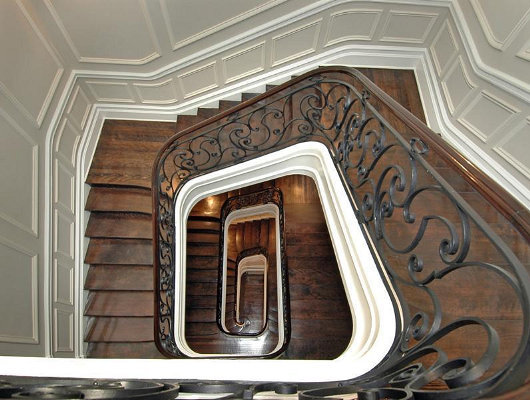
Phone books and files were occasionally hurled from the fourth-floor window out onto the 64th Street sidewalk like a faithless lover’s pajamas. … Visitors stopped by. The writer Veronica Geng lived down the street and used to offer advice, bartering it for a day with one editor who drove upstate to empty her country house. Down the block, the great luxury mastodon 32 East 64th, home to Mrs. Kitty Carlisle Hart, whose trim gams took her on their evening constitutional past the office every night; she would nod and ask, ‘How’s the paper?’ Across the street, the vaguely decadent Plaza Athénée, with its leopard-skin benches and $12 martinis.
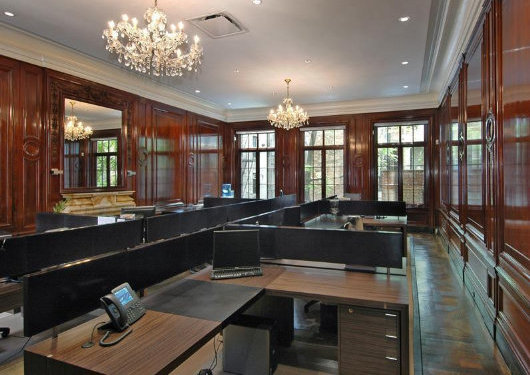
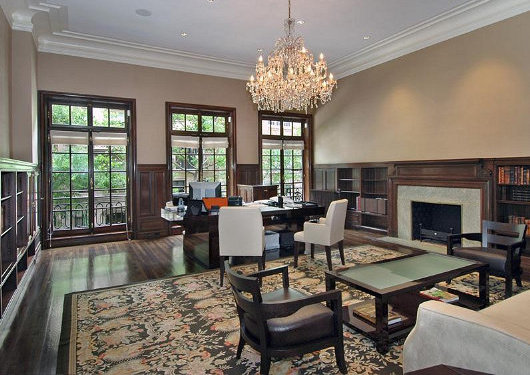
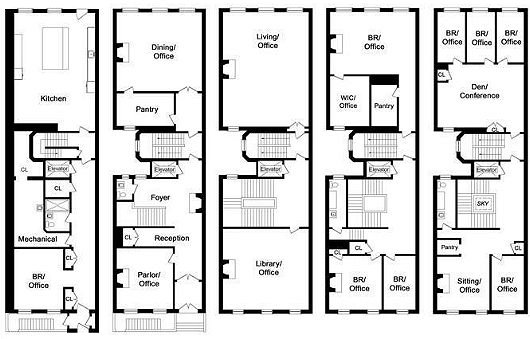
While up into our building trooped writers: the cheeky, the depressed, the jolly, the mission-driven, the perky. On the first floor, in what had been a grand dining room, the production department: hot waxers reminiscent of-not reminiscent of, identical to!-your high-school paper’s.
One flight up, the mandarin office of the publisher, a huge Oriental frieze staring down at the participants below, black-and-white photographs of Thomas Mann and Einstein smiling down at the whole enterprise. Across the hall, ad salespeople: glamorous, dark and shiny ladies with a sheen, first single, then married, then single, with dangerous ebony hairdos like movie noir heroines.
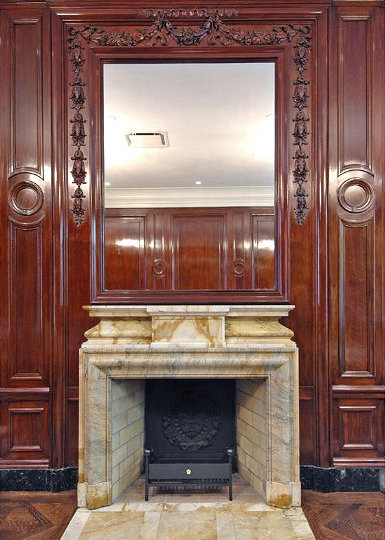
Cranking up and down, a cage elevator, witness to God knows how many muttered or screaming conversations, creaking up and down among the four floors and the cool basement, where checks were cut that soothed tempers on the other floors.
Highest of all in this crazy little enterprise, the dotty fireworks of the fourth floor, where politics were dissected, plots hatched, sociology sprinkled, coffee guzzled and names thrown around. … Hidden calls from psychiatrists, occasional nervous breakdowns not-so-manqué , pranks of Homeric intricacy, involving a floating cast of characters that appeared to the in-house residents of the house like the offstage stock company in a sitcom during the Seinfeldian 90’s. Story subjects called and screamed; others showed up for some mischief: Bill Murray, Mike Wallace, the occasional Mayor. Norman Mailer, clanking in on a cane to bring draft after draft of his cartoon ‘Puffs’. Bill O’Reilly and Carol Channing were on the phone. Martinis were served in summer, and ‘Sex and the City’ came and went.
There was Leon the office-supplies guy, who gave out pencils one at a time, and Angie the switchboard operator, who shrieked the editors’ names up the stairwell like Stanley Kowalski, and the young intern who everyone was afraid might have explosives strapped under his shirt. But nobody brought out the curious empathy of the building like the librarian who sat in her cubby making small cooing noises like a pigeon and one day just fluttered away without notice, leaving behind the French-fairy-tale possibility that she had been a bird all along.
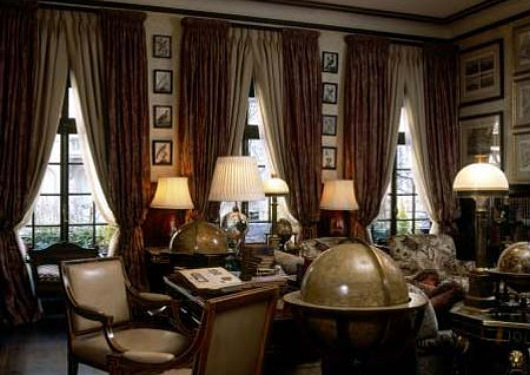
Much has changed, not only at No. 54 East Sixty-fourth Street, but also at the transplanted Observer. In 2006, a 25-year-old NYU law student named Jared Kushner bought the paper off the founder Arthur L. Carter and has transformed it in the brief time since then. The swanky, old-fashioned broadsheet format was dumped for a tabloid size, the internet presence was boosted (as was coverage of finance and real estate), and old journo Kaplan finally gave up the editorial helm of the Observer last year. But its old headquarters can be yours for a cool $27 million — or perhaps a few less million if you’re inclined to put in an offer.
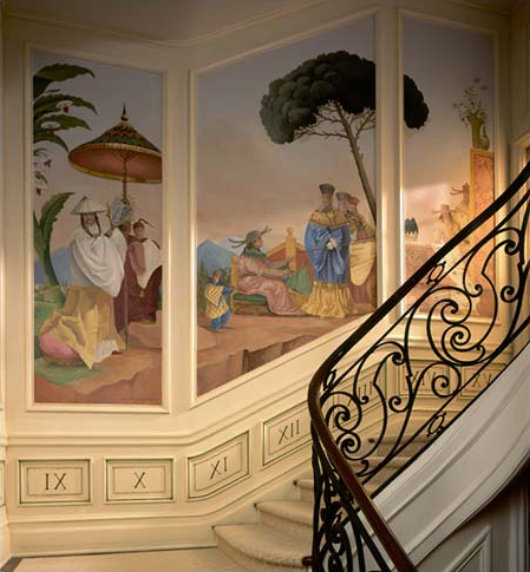
Listing: Sotheby’s International Realty
Search
Instagram: @andcusack
Click here for my Instagram photos.Most Recent Posts
- Silver Jubilee November 21, 2024
- Articles of Note: 11 November 2024 November 11, 2024
- Why do you read? November 5, 2024
- India November 4, 2024
- The Lithe Efficiency of the Old Constitution November 4, 2024
Most Recent Comments
Book Wishlist
Monthly Archives
Categories



Andrew, Except for that last bit suggesting a discounted sale, I would expect Sotheby’s to steer potenatil buyers to this fine little history of the building. All we need is Kight Commander Coulombe to scare up some ghosts for the place.
Many thanks, Andrew. How else would we be able to view all this elegance but for your interests. Sigh . . .
— Pat Hascall
Well, you could look it up on Sotheby’s, as I once have had. Of course, it was nowhere nearly as eloquently written as Andrew’s piece is.